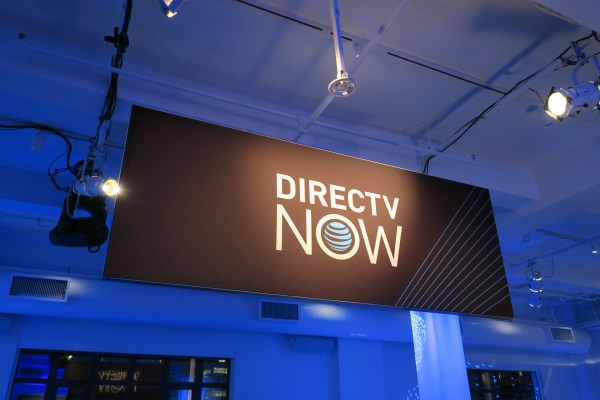AT&T’s live TV streaming service, DirecTV Now, is not doing so well. Along with AT&T’s fourth-quarter earnings released this morning, the company reported a sizable loss of 267,000 DirecTV Now subscribers. This left AT&T with fewer DirecTV Now customers at the end of the year (1.6 million), than it had in Q2 (1.8 million).
The company attributed the decline to the end of promotional-package pricing, which sometimes saw the service priced as low as $10 per month for an introductory period. It had also offered device giveaways — like Roku streaming sticks or Apple TV boxes — to encourage signups.
AT&T says its “discounted introductory offers ended,” which resulted in the dramatic loss.
But that’s masking a larger concern. DirecTV Now subscribers didn’t see the value in paying full price for streaming live TV via AT&T’s service, even though its streaming packages start at $40 per month — which is a competitive price point among similar live TV services. Hulu with Live TV, for example, just raised prices for its core live TV package to $45 per month, and YouTube TV raised its price to $40 per month last March.
Even the low-cost skinny bundle from Dish’s Sling TV inched up its base package by $5 per month last summer.
The subscribers who are ditching DirecTV Now aren’t necessarily doing so because they’re not interested in streaming TV — they may just find the DirecTV Now product lacking.
Its cloud DVR feature, for instance, only offers 20 hours of recording space and saves shows for a month. Sling TV and Hulu offer 50 hours of storage. YouTube TV’s DVR is unlimited. Several services today offer to save shows for far longer than 30 days, as well.
The DirecTV Now interface is fairly basic, compared to rivals, which are today competing on making services better personalized to customers. DirecTV Now, meanwhile, considers marking favorite channels or bookmarking shows to a library a form of personalization.
The company is also putting its eggs in a number of different baskets when it comes to streaming. Instead of just offering one package that customers can customize with add-ons, it offers multiple streaming services. While DirecTV Now does offer tiered pricing plans that increase the number of channels available, AT&T additionally today operates a second, low-cost, entertainment-focused service called WatchTV, which is bundled with some AT&T wireless plans and largely meant to reduce wireless subscriber churn.
On top of that, the company’s WarnerMedia division is rolling out yet another service later this year, to leverage AT&T’s newly acquired WarnerMedia properties, like HBO. And HBO has its own over-the-top offering, too, with HBO NOW.
That means AT&T’s DirecTV Now won’t only be competing with other live TV services, it will be competing with other AT&T streaming services, too.
Of course, one could argue that it’s not fair to position a live TV streaming service against one that’s more movie-focused, as the upcoming direct-to-consumer WarnerMedia offering will be. But at the end of the day, consumers only have so many extra dollars per month to spend on streaming. And they don’t seem to be dropping Netflix.
Instead, they’re choosing from among dozens of options to customize their cord-cutter bundles, ranging from true à la carte TV, as with Amazon Channels, to free TV and movies, as with The Roku Channel, to live TV streaming services and subscription videos services, like Hulu. Perhaps AT&T believes if it offers enough variety, at least one of its services will get inserted into that mix.
More concerning for DirecTV Now’s future is that AT&T believes the answer to concerns is to raise prices and reduce the number of channels. As The Wall St. Journal recently reported, AT&T execs think newcomers like Google’s YouTube TV are subsidizing an unprofitable service. AT&T CEO Randall Stephenson said in December that DirecTV Now will not do that — in fact, it’s in the process of “thinning the content out” to keep the price tag around “$50 to $60” — meaning, at least $10 per month more than it is today.
